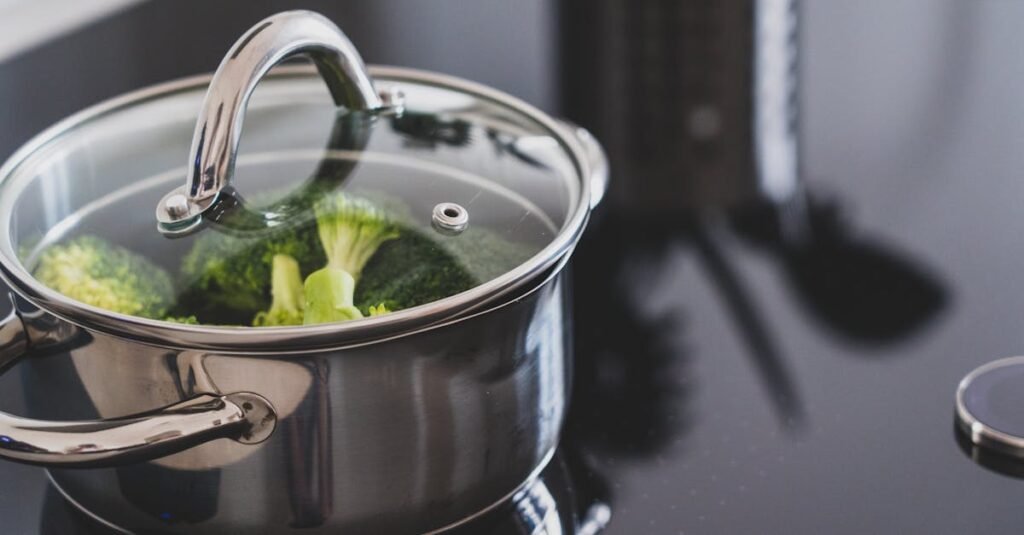Broccoli is a nutritious vegetable that many people enjoy for its health benefits and versatility in cooking. One of the simplest ways to prepare broccoli is by boiling it, but how long should you actually boil it to achieve the best flavor and texture? In this article, we’ll explore the optimal boiling times for broccoli and provide you with a clear guide to perfecting this green vegetable.
| Broccoli Type | Boiling Time (minutes) |
|---|---|
| Fresh Broccoli Florets | 3-5 |
| Frozen Broccoli Florets | 5-7 |
| Whole Fresh Broccoli | 6-8 |
| Broccoli Stems | 5-7 |
| Broccoli Rabe | 2-4 |
Fresh Broccoli Florets
When boiling fresh broccoli florets, the ideal cooking time is between 3 to 5 minutes. This short boiling time helps retain the vibrant green color and essential nutrients while ensuring that the broccoli is tender yet crisp. To achieve the best results, it’s advisable to start checking the florets at the 3-minute mark. If they are still too firm for your liking, you can let them boil for an additional minute or two.

Frozen Broccoli Florets
Frozen broccoli florets typically require a slightly longer boiling time of 5 to 7 minutes. Since they are blanched before freezing, they cook faster than fresh broccoli but still need adequate time to heat through and soften. Be sure to stir the florets occasionally while boiling to ensure even cooking. Once they are bright green and tender, they are ready to be enjoyed.

Whole Fresh Broccoli
If you’re boiling a whole head of fresh broccoli, the recommended boiling time is between 6 to 8 minutes. This allows the heat to penetrate the dense core of the broccoli while cooking the florets evenly. After boiling, you can cut the broccoli into smaller pieces for easier serving and eating. This method is perfect for those who want to serve broccoli as a side dish without cutting it into florets beforehand.

Broccoli Stems
Broccoli stems require about 5 to 7 minutes of boiling time. Many people discard the stems, but they are nutritious and delicious when cooked properly. To prepare the stems, you can peel the tough outer layer and cut them into smaller pieces before boiling. This will help them cook more evenly and make them more palatable.

Broccoli Rabe
Broccoli rabe, also known as rapini, is a leafy green vegetable that has a slightly bitter taste. It requires a shorter boiling time of 2 to 4 minutes. Due to its delicate nature, overcooking can lead to a mushy texture, so it’s essential to keep an eye on it while boiling. Once cooked, broccoli rabe can be enjoyed on its own or added to a variety of dishes for a nutritious boost.

FAQs
How can I tell when broccoli is done boiling?
To determine if broccoli is done boiling, you can pierce the florets with a fork. If the fork easily goes through but the florets still have a slight crunch, they are perfectly cooked. Overcooked broccoli will become mushy and lose its bright green color.
Can I boil broccoli ahead of time?
Yes, you can boil broccoli ahead of time. After boiling, you can place it in an ice bath to stop the cooking process. Once cooled, drain and store it in an airtight container in the refrigerator for up to 3 days. You can reheat it later or add it to salads and other dishes.
Is boiling the best way to cook broccoli?
While boiling is a quick and easy method, steaming is often considered a better option as it helps retain more nutrients. However, boiling can be a great way to prepare broccoli for salads or recipes that call for cooked broccoli. The key is to avoid overcooking, regardless of the method you choose.
Can I season broccoli while boiling?
It’s not common to add seasonings to boiling water, but you can add salt to enhance the flavor. If you prefer to season your broccoli, consider adding a drizzle of olive oil, lemon juice, or your favorite seasoning after boiling for added taste.
What are some ways to serve boiled broccoli?
Boiled broccoli can be served as a side dish, tossed in salads, added to pasta dishes, or blended into soups. For a simple preparation, you can drizzle it with olive oil and sprinkle with salt and pepper. You can also add cheese or garlic for additional flavor.
References:
– [USDA FoodData Central](https://fdc.nal.usda.gov/)
– [Nutrition.gov](https://www.nutrition.gov/)
– [CDC – Fruits and Vegetables](https://www.cdc.gov/nutrition/healthy-eating/index.html)


